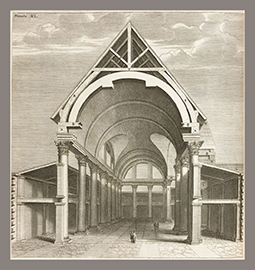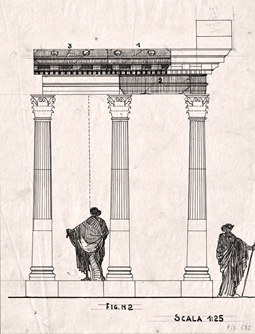Author: A. Labriola
Download article as .pdf: La tipologia forense nel De architectura: teoria o prassi costruttiva? Una verifica nella Hispania alto-imperiale
 Since its rediscovery in the Renaissance, Vitruvius’ work represents a key source for the study of ancient architecture. Nevertheless, the advancement of field research has progressively revealed that a large part of the theoretical framework provided by the Vitruvian treaty is scarcely corroborated in the buildings known from archaeological excavations. This paper proposes an empirical verification of the correspondence between Vitruvius’ guidelines on forums and the actual architectural praxis of his time, through the analysis of the diffusion in the three Roman provinces of Hispania of the proportional ratios suggested by the Latin author for the planning of forum squares and basilicas. Thanks to the large number of early imperial forum complexes known in this geographical area the resulting sample is large enough to obtain statistically significant results and to draw conclusions that could also be extended to other provincial contexts.
Since its rediscovery in the Renaissance, Vitruvius’ work represents a key source for the study of ancient architecture. Nevertheless, the advancement of field research has progressively revealed that a large part of the theoretical framework provided by the Vitruvian treaty is scarcely corroborated in the buildings known from archaeological excavations. This paper proposes an empirical verification of the correspondence between Vitruvius’ guidelines on forums and the actual architectural praxis of his time, through the analysis of the diffusion in the three Roman provinces of Hispania of the proportional ratios suggested by the Latin author for the planning of forum squares and basilicas. Thanks to the large number of early imperial forum complexes known in this geographical area the resulting sample is large enough to obtain statistically significant results and to draw conclusions that could also be extended to other provincial contexts.

